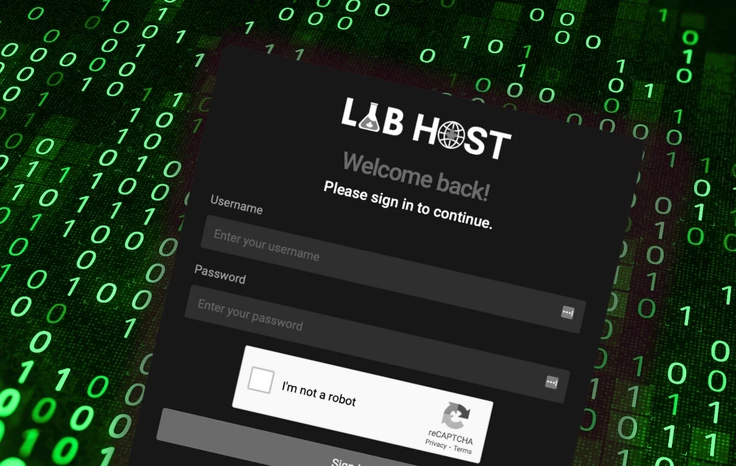Top 10 Ways to Prevent AI Bias
Top 5 Ways Technology is Being Used to Manage and Improve Workforce Mental Wellbeing

October 10th marked World Mental Health Day, and in true fashion, the annual public awareness observance saw thousands of people from across the globe showing their support. Personal stories of mental battles were shared, and 'instagrammable' uplifting quotes were broadcasted throughout the media to remind people to be kind, take care of themselves, and indulge in self-care. However, what made this year's event distinguishable from that of previous years – and in the same breath, indistinguishable from this spring's Mental Health Awareness Week – was its particular focal point and target audience.
Despite the World Federation for Mental Health declaring the theme of World Mental Health Day 2020 as "Mental Health for All – Greater Access for Everyone, Everywhere", online and offline conversations were primarily centred on a single demographic and subject matter: workforce mental wellbeing in the face of the current COVID-19 pandemic.
Pre-COVID, the Royal College of Psychiatrists found that 1 in 6 people (14%) experience mental ill-health in the workplace each year in Britain alone. Fast forward to today, and the presence of the virus has caused these rates to multiply and disperse worldwide. Strict, government-enforced lockdown measures used in in the hope of “flattening the curve” – i.e. “stay at home” and, more notably, “work from home if you can” – have had detrimental side effects on workforce mental wellbeing.
According to the Chartered Institute of Personnel and Development, employees reported a significant dip in their mental health as early as two weeks into lockdown. Lack of face-to-face colleague interaction as a result of enforced confinement and isolation has since continued. Reports of employee burnout have risen, with technostress being the biggest concern. Coined in 1984 by American psychologist Craig Brod, technostress is described as the negative impact of the introduction of new technologies on the mental wellbeing of humans. This phrase couldn’t be more relevant today, as remote workers are having to use and significantly rely on multiple forms of new technologies just to get by. It’s, thus, no surprise that new research by the 4 Day Week Campaign reveals that we’re in the midst of a "mental health crisis".
Yet, in saying this, the help and opportunities that technology has afforded workforces during this challenging time cannot be overlooked. The pandemic has shown that technology can, to some degree, be mindful; a mental wellbeing lifeline for employers and their employees. We’ve put together a list of the top five ways technology is being used to manage and improve workforce mental wellbeing to demonstrate this.
5. Video Conferencing Software
Video conferencing software is a godsend for workforce mental wellbeing. Although conventionally used to hold virtual team stand-ups and client meetings during those occasional out-of-office days, the technology is evolving into a social networking space. With remote working becoming the “new normal”, many organisations are investing in video conferencing software for the sole purpose of simple face-to-face colleague interaction. Being able to see a friendly face, especially when working in isolation, can help stimulate those feel-good neurotransmitters – dopamine, endorphins, and serotonin – and, in turn, boost morale and mood. The video conferencing software offered by Microsoft Teams is proving particularly popular by workforces. Its customisable virtual background feature brings additional pleasure to the visual communication experience.
4. Digital Workload Management Tools
All hail digital workload management tools! The tedious task of having to handwrite extensive to-do lists and uncover computer screens from mountains of sticky notes is no more. Designed with workers in mind, the tools help to improve task and time management and, consequently, reduce stress. Take Wrike for example. The collaborative work management platform aims to free teams from burnout by providing workforces with multiple organisation tools: project scheduling templates, team calendars, and “order by priority” filters.
To gain further insight into the positive impact that these tools are having on workforce mental wellbeing, we reached out to Wrike for an official comment:
“Collaboration software can open lines of communication even further, making it possible for real-time information sharing and greater visibility across internal teams and departments. If everyone is on the same page throughout an organisation, it should help to ensure that tasks are more evenly distributed and individuals are not overworked and at risk of additional pressure or stress.” – David McGeough, Director of International Marketing
3. Holiday Booking Systems
You may be wondering why we’ve included holiday booking systems to the list, but they’re more important to workforce wellbeing than you think. Providers like BrightHR allow employees to request annual leave for personal, private affairs (e.g. mental health days) with a click of a button, thereby eliminating the need to directly discuss it with employers. In this case, lack of face-to-face colleague contact aids in lessening feelings of anxiety.
On top of this, these systems allow employers to check that employees are using their annual leave and taking time to switch off and relax.
2. Mental Wellness Apps
There are apps for almost everything these days, and the latest addition to the group is mental wellness apps. Headspace and Calm are the most acclaimed mindfulness apps, but one app that stands out in a league of its own is Unmind. Like digital workload management tools, Unmind specifically addresses the needs of workforce mental wellbeing. Underpinned by clinical psychology, the company strives to empower workers to measure, understand, and improve their mental health through the likes of interactive courses, bitesized workouts, and mood assessments. This holistic and “tailored to you” approach is at the core of Unmind’s work; they acknowledge that “every mind is unique”, that “we all exist on spectrums, from surviving to thriving”.
In a statement on the company’s ethos, Dr Nick Taylor, Co-founder and CEO of Unmind, remarks:
"There is no one-size-fits-all approach to solving [workforce mental ill-health], each and every one of us will be on our own journey. That's why [at Unmind,] we believe workplace digital mental health solutions that focus on personalisation and empowering employees will be the most effective route for organisations to follow."
1. Wearable Mood Monitor Devices
The use cases of wearable technology have greatly evolved since the first known creation in 1961. From roulette cheat sheets, virtual reality games, and physical fitness trackers, to the more recent creation: mood monitors. Tech start-ups such as Moodbeam, are taking on the challenge of creating wearable devices that capture and monitor emotions in the hope of encouraging openness about mental health amongst individuals, and more specifically, organisations. Moodbeam for Business targets busy workforces, equipping them with the ability to log how they feel on the go with the push of a button.
We asked Christina Colmer McHugh, the Director and inspiration behind Moodbeam, about how the wearable device supports workforce wellbeing. She replied:
“The non-intrusive, user-led approach encourages transparency when it comes to company conversations, while at the same time, giving team leaders and those whose job it is within HR or People and Culture the opportunity to gauge the morale.”
Christina also highlighted that Moodbeam is “a way of giving staff a voice, allowing them to speak up if they find they're struggling with internal or external factors throughout their working day.”

























